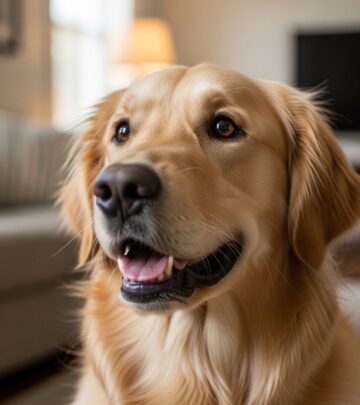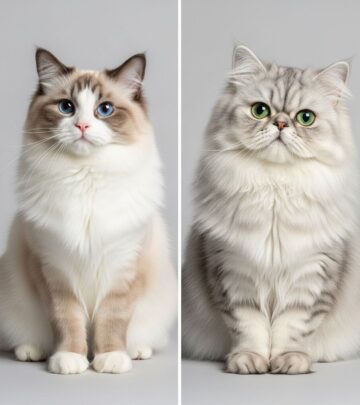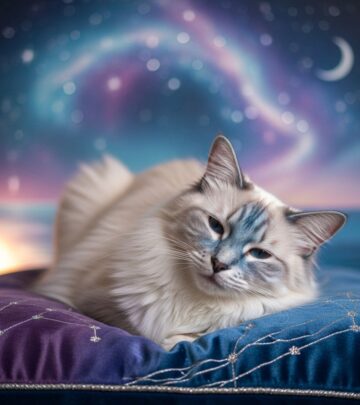Dragon Li vs. Tabby Cat: Breed Differences, Traits & Care Guide
Explore the unique distinctions between the mysterious Dragon Li and the ubiquitous Tabby cat, from origins to characteristics and care.

Dragon Li vs Tabby Cat: Breed Comparison & Essential Guide
Among the world’s many cat breeds, few comparisons invite as much curiosity as the rare Dragon Li and the familiar Tabby cat. While the Tabby is recognized more for its coat pattern rather than a specific breed, the Dragon Li is a distinct, ancient Chinese breed with unique features and folklore. This guide explores their differences, appearances, temperaments, and care needs to help cat lovers appreciate what makes each type special.
Breed Origins & Lineage
Dragon Li
The Dragon Li (also known as Chinese Li Hua or Li Hua Mao) is an exceptionally rare breed believed to have originated in China from native, self-domesticated cats called Li hua mao—translated as ‘leopard cat patterned cat’. Influenced by Chinese folklore and legends, the breed stands for power and good luck. Until recent years, this breed was restricted mostly to China, and formal recognition came from the China Cat Aficionado Association. For a brief period, international cat organizations acknowledged it, but the breed remains scarce outside its native land.
Key points:
- Ancient, naturally occurring breed from China
- Linked to local legends—dragon symbolizes strength
- Rare outside China, sometimes mistaken for wild animals because of appearance and folklore
Tabby Cat
Unlike the Dragon Li, a Tabby cat is not a specific breed but a common coat pattern found across numerous cat breeds and mixes. The tabby pattern comes in various forms, such as classic, mackerel, spotted, and ticked, and may manifest in many colors such as brown, gray, orange, and more. Tabbies are descended from wildcats and have spread globally, making them a mainstay among domestic cats today.
Key points:
- “Tabby” refers to a coat pattern, not a breed
- Pattern found in countless breeds and mixed cats
- Most common pet cat appearance worldwide
Physical Characteristics
| Feature | Dragon Li | Tabby Cat |
|---|---|---|
| Origin | Native Chinese breed | Pattern found worldwide |
| Body Type | Rectangular, muscular, stocky | Varies from slender to cobby, depending on breed |
| Size | Medium to large; males heavier | Range from small to large depending on parent breed |
| Height | 10–14 inches | Varies widely |
| Weight | 10–15 pounds | Average 8–15 pounds |
| Coat | Short, golden-brown with broken-mackerel stripes | Short or long hair, multiple tabby patterns |
| Eye Color | Luminescent yellow or green, almond-shaped | Wide range, often gold, green, amber |
| Other Features | Distinct ear tipping, wide paws | Depends on breed and genetics |
Personality & Temperament
Dragon Li
Dragon Li cats display a combination of intelligence, loyalty, independence, and athleticism. They tend to be outgoing, social with family, but not overtly affectionate. With high intelligence and keen hunting instincts, they enjoy interactive games, retrieving objects, and mental challenges. While dignified and sometimes needing alone time, especially females, males may display quirky behaviors.
Temperament highlights:
- Intelligent and eager to explore
- Loyal to family, but not usually lap cats
- Enjoy active play, especially outdoors
- Easy to housetrain, generally tolerant of other pets
- Prefer spacious environments, can become claustrophobic in small spaces
- Males tend to be more playful and energetic; females more reserved
Tabby Cat
Given that “tabby” describes a pattern, tabby cats can have a wide array of personalities, reflecting their breed and upbringing. However, domestic shorthair and mixed breed tabbies tend to be friendly, adaptable, inquisitive, and good with families. Tabbies are often seen as classic companion cats due to their prevalence, varying from lap-loving to adventure-seeking.
Personality highlights:
- Wide range of dispositions—can be playful, affectionate, or aloof
- Often social and adaptable, depending on breed
- May have strong hunting instincts like the Dragon Li
- Common pets, frequently found in shelters
Dragon Li Kittens
Dragon Li kittens are vigorous, curious, and love exploring and play. They spend their formative months honing hunting, pouncing, and chasing skills. While they bring lots of energy and excitement to a household, they can develop mischievous or slightly destructive habits in adolescence, requiring diligent training and redirection from owners. Since kittens are rarely available outside China, observing a Dragon Li kitten is a rare experience.
- Very playful and energetic
- Quick learners—may excel at interactive training
- Destructive behaviors possible during “teenage” phase
- Exercise and mental stimulation essential for development
Care Guide: Grooming, Diet & Health
Grooming Needs
- Dragon Li: Easy to groom, weekly brushings control shedding. Baths only every 1–1.5 months. Regular ear cleaning, teeth brushing, and nail trimming keep them healthy.
- Tabby Cat: Grooming needs depend on breed and hair length. Shorthaired tabbies need less frequent brushing, while longhaired variants require more maintenance.
Diet Preferences
- Dragon Li: Needs balanced diet rich in protein, with consultation from a vet to adjust according to age, weight, and health needs. Fresh water is essential.
- Tabby Cat: Dietary needs are dictated by their genetics and age. Most do well on high-quality cat food with plenty of water.
Health Considerations
- Dragon Li: Typically robust and healthy, but regular vet checkups are vital to detect any issues early. No breed-specific diseases currently documented.
- Tabby Cat: General health depends on breed; mixed-breed tabbies often have fewer genetic health issues. Still, annual vet visits and preventive care are essential.
Living Conditions: Which Cat Suits Your Lifestyle?
Dragon Li
- Needs large, open spaces and safe outdoor accessibility
- Best suited to active families or homes with outdoor enclosures
- Less ideal for small apartments or limited indoor environments
Tabby Cat
- Highly adaptable—can thrive in apartments, houses, and rural settings
- Suitable for most families, singles, or seniors
Frequently Asked Questions (FAQs)
Are Dragon Li cats good with children?
Yes, particularly with children who are gentle and respect the cat’s boundaries. Males may be more playful, while females prefer quiet and calm environments.
Can Dragon Lis live with other pets?
They generally get along well with other cats, dogs, and most domesticated animals, provided introductions are handled properly.
Are tabby cats a breed of their own?
No, “tabby” refers to a coat pattern rather than a distinct breed. This pattern occurs in countless breeds and mixed breed cats.
Which cat is easier to keep in an apartment: Dragon Li or Tabby?
Tabby cats (especially domestic shorthairs) adapt easily to apartment life. Dragon Lis need more space and often feel claustrophobic in small homes.
Do Dragon Lis require special grooming?
They are easy to groom, requiring weekly brushing, periodic baths, and routine nail, ear, and dental care.
How rare is the Dragon Li outside China?
Dragon Lis are exceedingly rare outside their native land and difficult to acquire internationally.
Summary Table: Quick Comparison
| Aspect | Dragon Li | Tabby Cat |
|---|---|---|
| Breed Status | Distinct, standardized breed | Pattern found in many breeds |
| Availability | Rare, mainly in China | Everywhere |
| Appearance | Stocky, golden-brown, broken stripes | Varies by pattern: classic, mackerel, spotted, ticked |
| Personality | Loyal, intelligent, active, independent | Wide variety: affectionate, playful, adaptable |
| Best For | Active families, homes with space | Almost any household |
Conclusion: Choosing Your Perfect Cat
The Dragon Li cat enchants cat enthusiasts seeking an energetic, intelligent, and independent companion—ideal for homes with ample space and a love for feline folklore. In contrast, the Tabby cat, with its versatile personality and adaptability, remains a perennial favorite for countless families and individuals. No matter your preference, understanding each cat’s unique traits will help you foster a happy, healthy relationship with your feline friend.
Read full bio of medha deb












